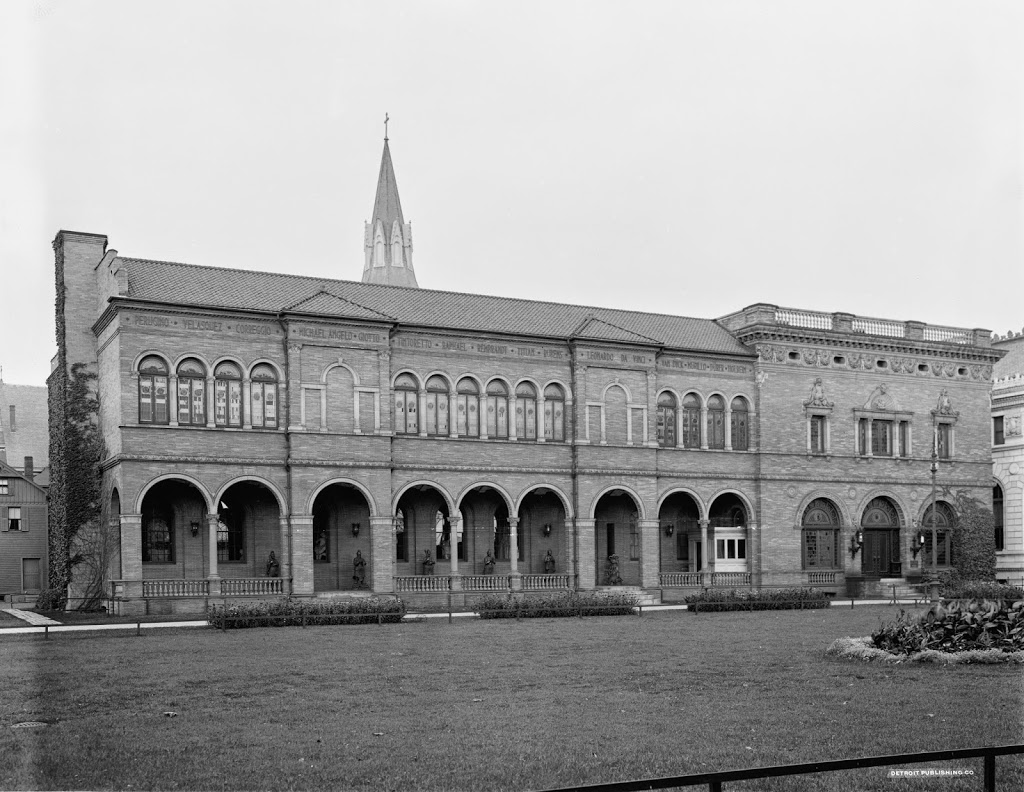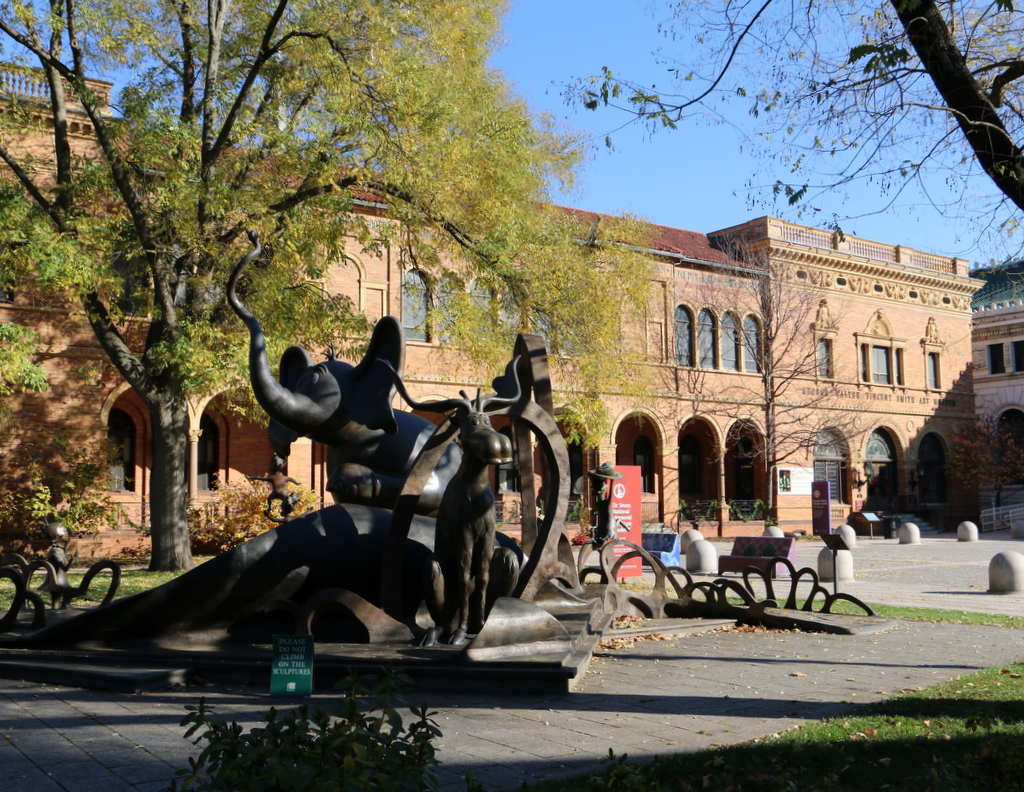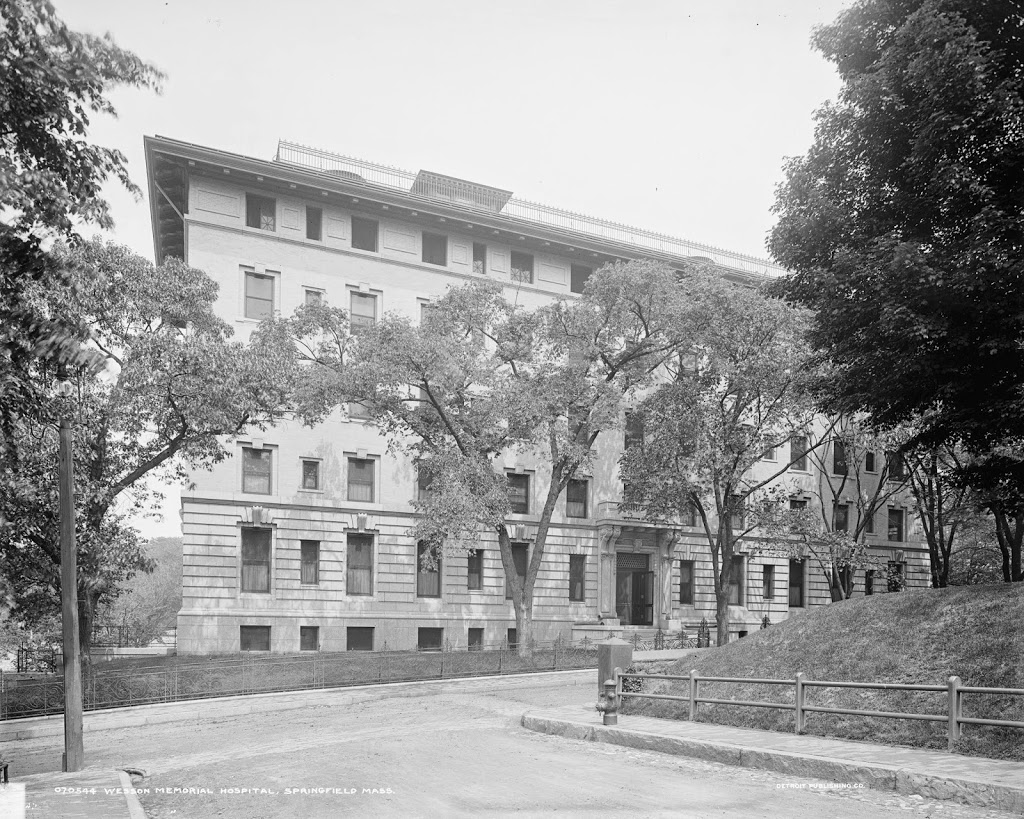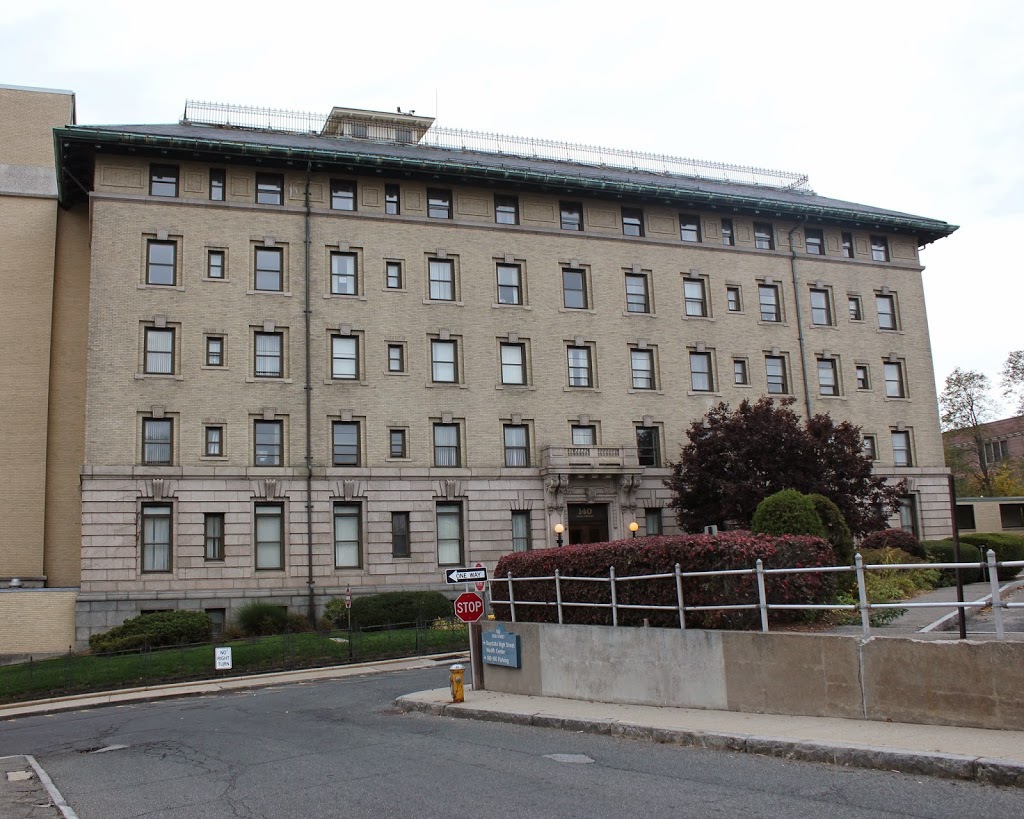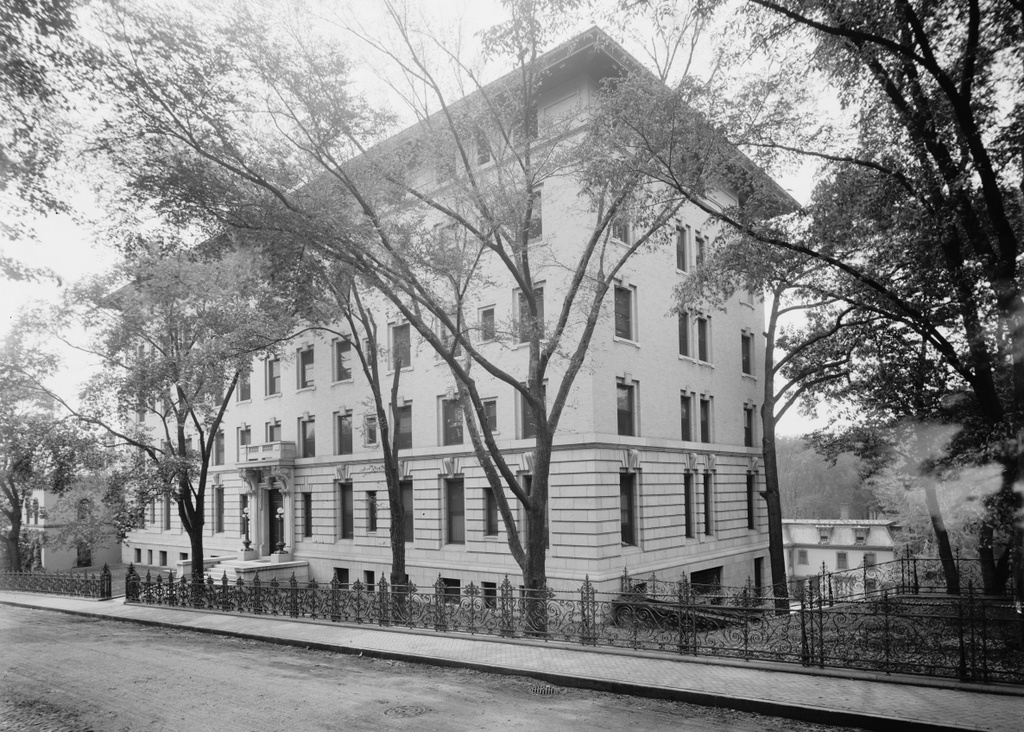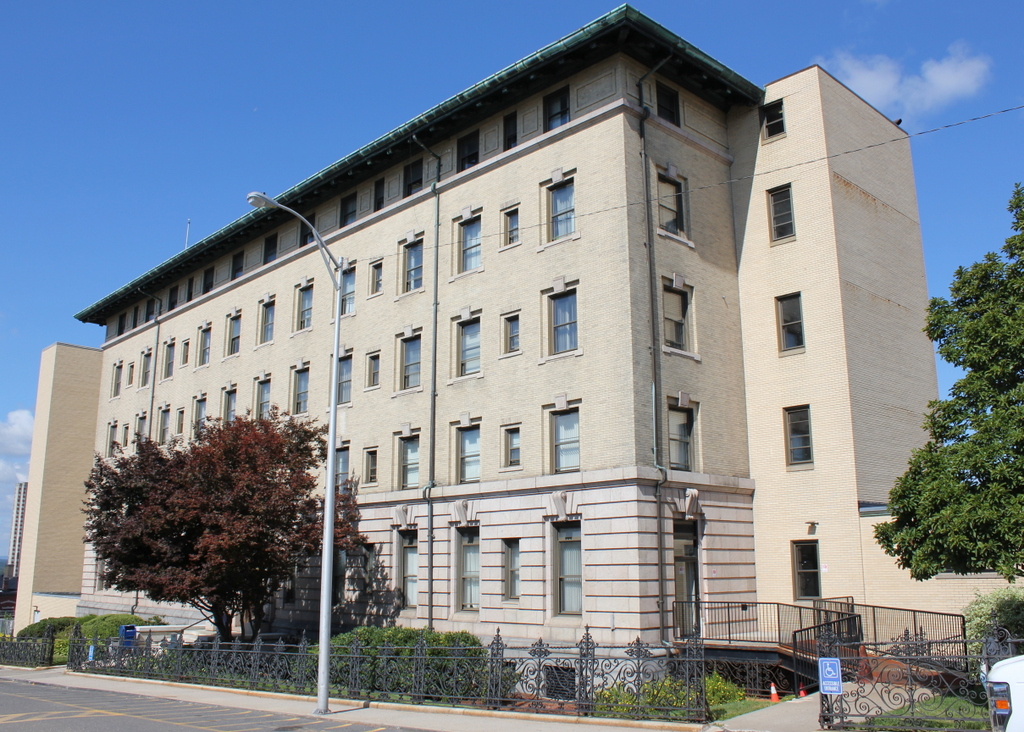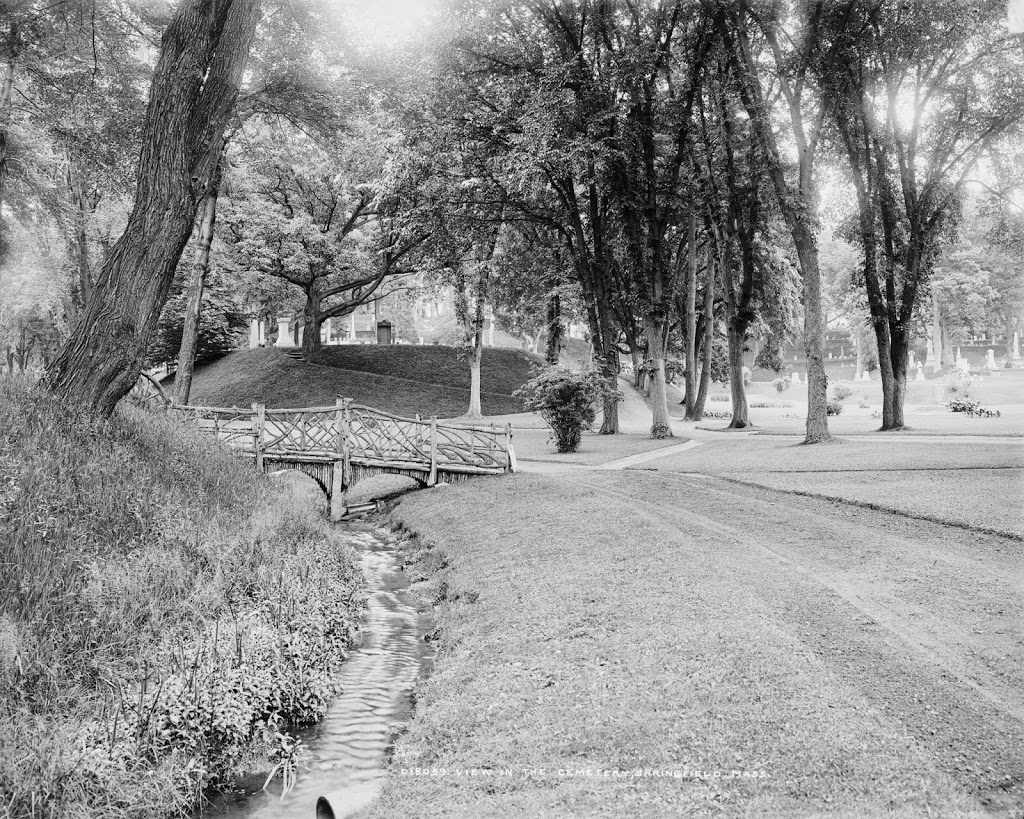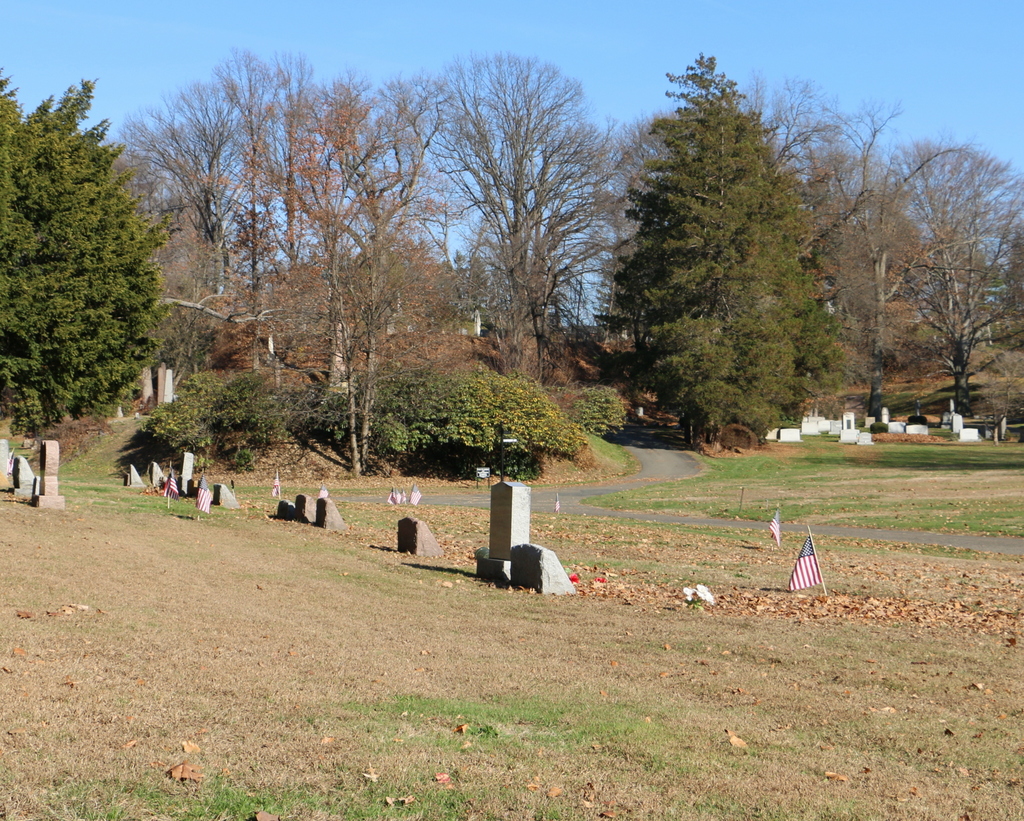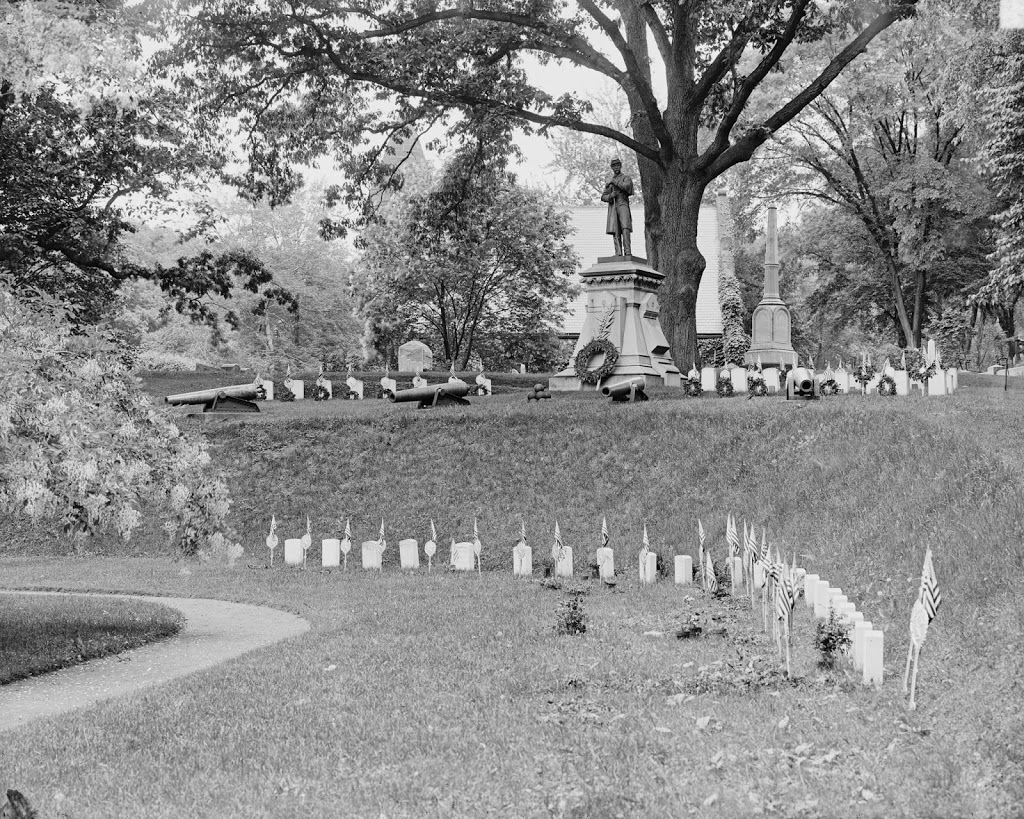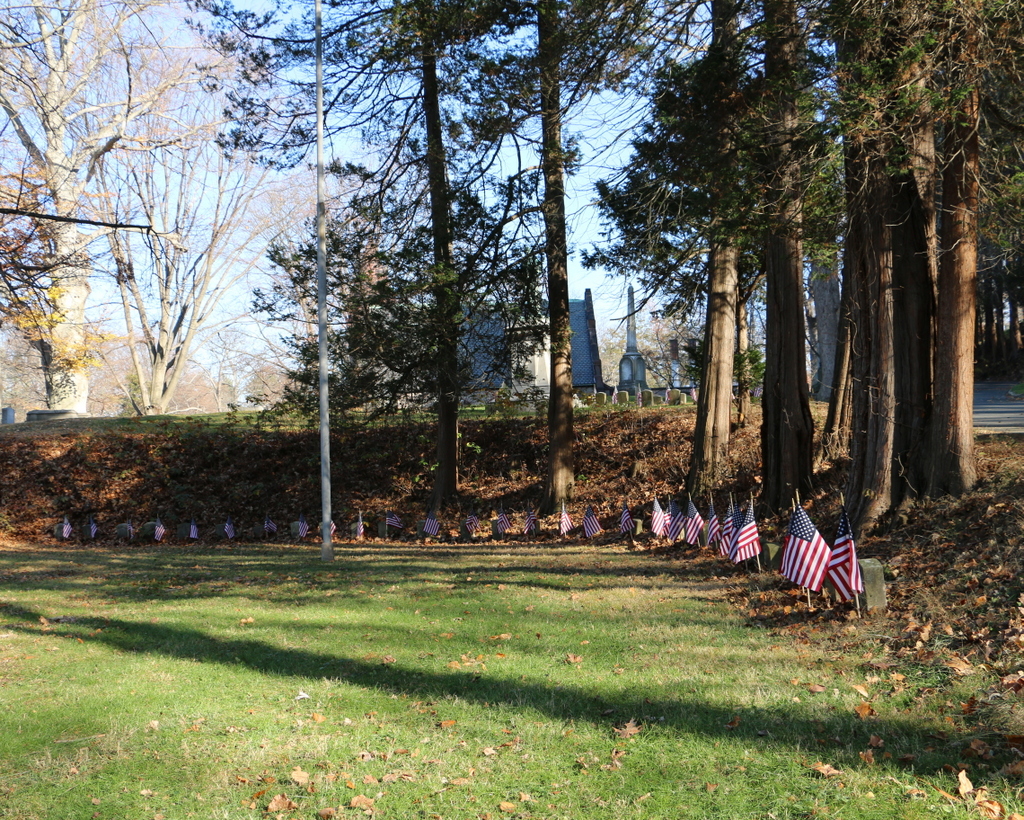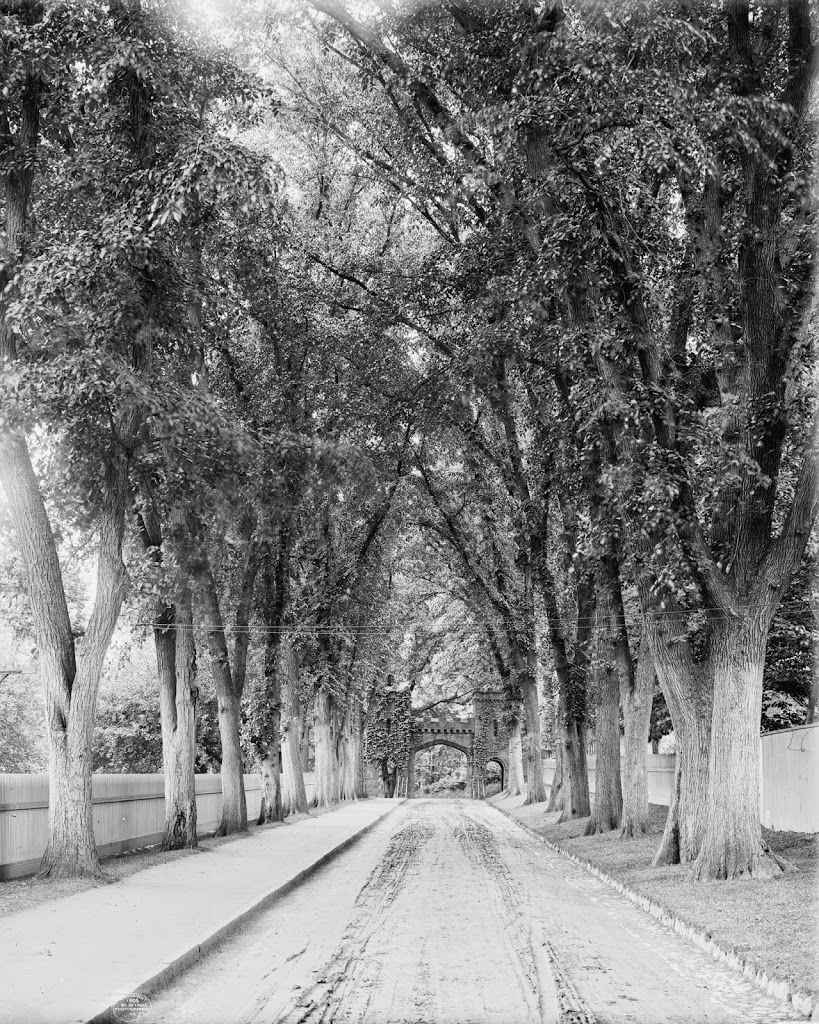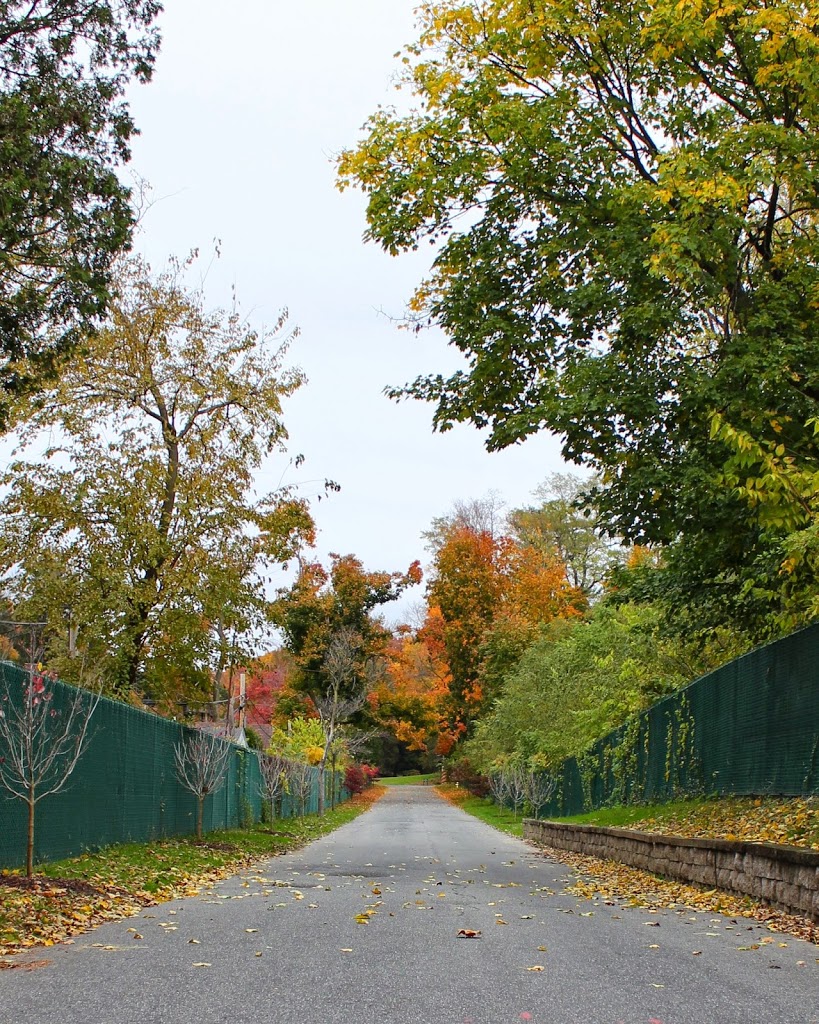The Art Museum in Springfield, around 1912-1920. Image courtesy of the Library of Congress, Detroit Publishing Company Collection.
The museum in 2014:
Known today as the George Walter Vincent Smith Art Museum, it was established in 1896 and is the oldest of the museum buildings in The Quadrangle, which consists of two art museums, a science museum, and a Springfield history museum. The building is named after its benefactor, a New York City carriage maker who left the business when he was 35 to collect art. Today, the building is still there and it still houses his collection, although at some point it was expanded to the left, making this facade more or less symmetrical. In the foreground is the Dr. Seuss National Memorial Sculpture Garden, which celebrates the work of the Springfield native who was attending high school across the street from here around the time that the first photo was taken. On the far right of both photos is the back of the Central Library building, which opened in 1912.

